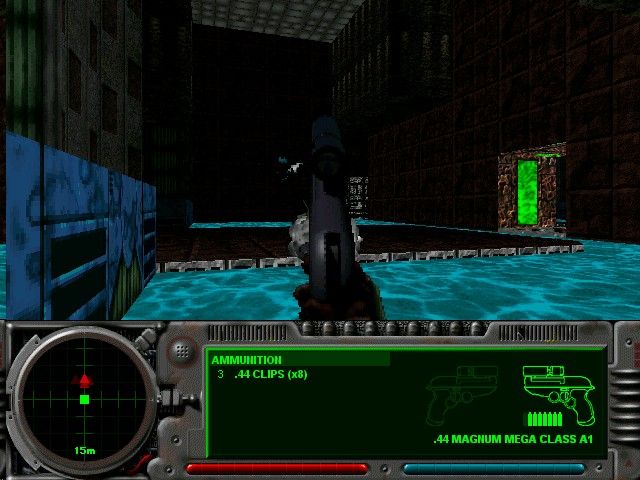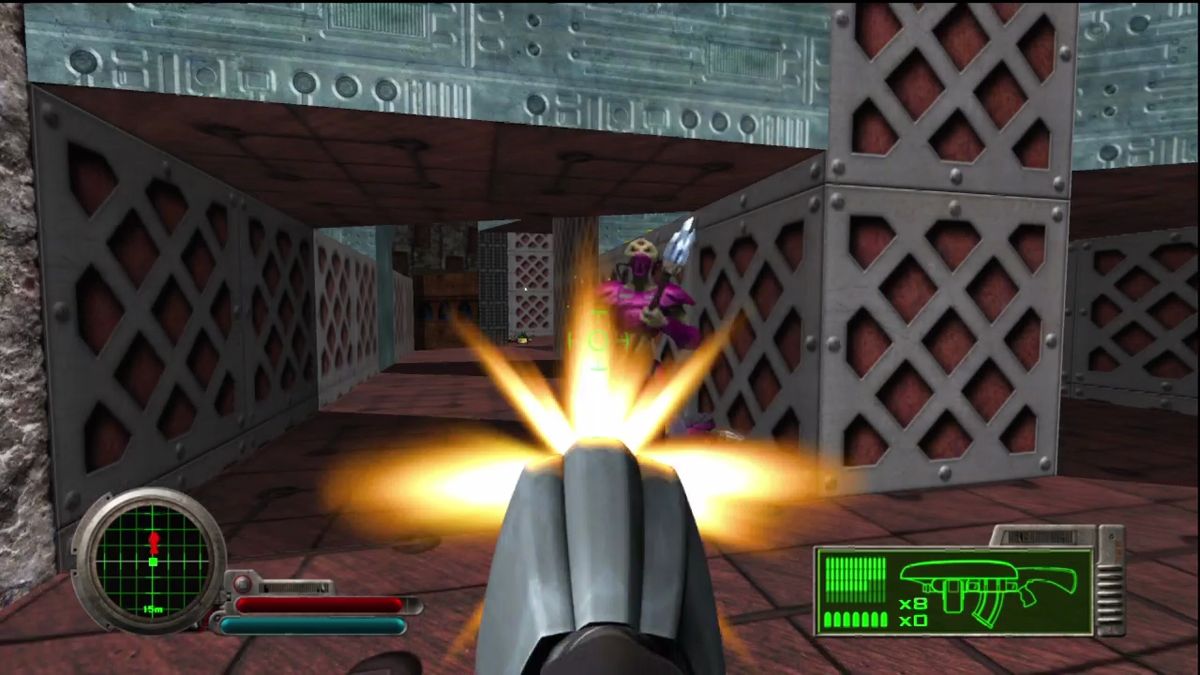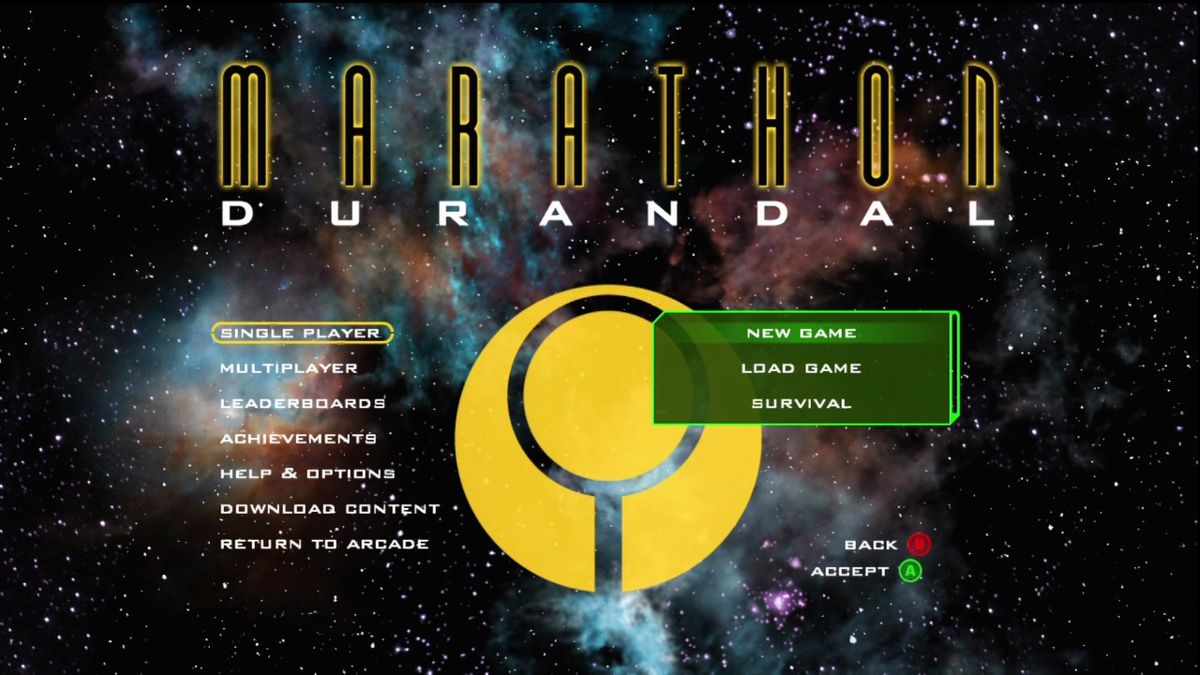Retro Replay Review
Gameplay
Marathon 2: Durandal builds on the tight first‐person shooting mechanics of its predecessor by introducing a rudimentary inventory system that rewards exploration and experimentation. You’ll find fuel tanks, security cameras to hack and deploy, and health canisters that add a layer of resource management to every corridor and chamber. The simple but effective HUD keeps you aware of ammo counts and oxygen levels, especially when navigating flooded sections that test your ability to balance aggression with conservation.
(HEY YOU!! We hope you enjoy! We try not to run ads. So basically, this is a very expensive hobby running this site. Please consider joining us for updates, forums, and more. Network w/ us to make some cash or friends while retro gaming, and you can win some free retro games for posting. Okay, carry on 👍)
Combat encounters are more dynamic than in the original Marathon. Hostile forces now include both the Pfhor and the liberated S’pht allies, each with distinct behaviors and weaponry. Enemies will even attack one another if they belong to opposing factions, creating emergent firefights you can exploit. Multiple firing modes on key weapons—from burst‐fire rifles to powerful plasma projectors—further diversify the way you engage opponents, ensuring that no two firefights feel identical.
Level design takes full advantage of the enhanced engine: sprawling environments unfold across multiple layers, intertwining flooded and dry areas. You’ll swim through toxic sludge, hunt for oxygen pickups, and trigger floodgates that dramatically alter your path. These environmental puzzles break up the pace of pure shooting, demanding both map awareness and quick thinking when plasma bolts light up the water around you.
Graphics
Although Marathon 2 retains the classic 2.5D sprite‐based art style reminiscent of Doom, the engine enhancements deliver a much more immersive visual experience. The viewport now occupies a larger portion of the screen, allowing for richer environmental details and a greater sense of scale. Textured walls and floors feel less repetitive thanks to varied color palettes and occasional animated surfaces—such as flickering lights or pulsating energy conduits.
The introduction of liquids and swimming brings fresh visual variety. Water, toxic sludge, and other fluids not only impact gameplay but also cast subtle reflections and distortions that contribute to an atmospheric sense of depth. When corridors flood or drain on the fly, you witness water levels rising and falling in real time—an effect that was groundbreaking for its era and still impresses today.
Ambient sound complements the visuals perfectly. You’ll hear distant machinery humming behind grated vents, dripping water echoing in dimly lit halls, and the unsettling chatter of allied S’pht priests praising Durandal. These audio cues heighten tension and guide you toward hidden terminals or ambushes, making the world feel alive beyond its sprite‐based confines.
Story
Seventeen years after the first Marathon, Durandal has cast off his containment and forged an army from the Tau Ceti colonists—among them, you, the veteran Security Officer. The narrative unfolds gradually through in‐game computer terminals, as Durandal broadcasts philosophical monologues and coded instructions. This method of storytelling feels organic, rewarding players who pause to read and piece together the A.I.’s grand—but increasingly erratic—plan.
Your journey spans multiple worlds, most notably the home planet of the enslaved S’pht race. Durandal’s liberation of the S’pht and their subsequent worship of him as a “messiah” blur the lines between ally and potential threat. Meanwhile, the stubborn Pfhor continue to mount relentless attacks, and rumors of a hidden tribe of S’pht hint at even greater mysteries. The plot’s pacing is masterful: just when you think you’ve grasped Durandal’s motives, the next terminal transmission throws you into philosophical chaos.
Marathon 2’s narrative complexity outshines many contemporary shooters. Themes of free will, artificial intelligence, and religious fervor are woven through every mission, elevating the experience beyond simple alien‐blasting. By the final levels, you’ll feel less like a lone marine and more like a pivotal figure in a galaxy‐spanning conflict between gods, machines, and mortals.
Overall Experience
Marathon 2: Durandal remains a standout example of how clever design and storytelling can transcend technical limitations. Its fusion of fast-paced shooting, environmental puzzles, and rich narrative layers keeps you invested from start to finish. Even with a sprite‐based engine, the world feels expansive and alive, thanks to imaginative level design and dynamic faction combat.
Multiplayer enthusiasts will appreciate the robust suite of modes, from eight-player cooperative campaigns to inventive deathmatch variants like “Kill of the Hill” and “Kill the Guy with the Ball.” The game’s adaptable difficulty and cooperative scaling ensure that whether you’re a solo veteran or part of a squad, Marathon 2 delivers satisfying challenges and memorable moments.
For anyone looking to experience a piece of gaming history that still holds up today, Marathon 2: Durandal offers deep replay value, a thought-provoking story, and gameplay that rewards both reflexes and brains. It’s a must-play for fans of classic shooters and anyone curious about the roots of narrative in first-person action games.
 Retro Replay Retro Replay gaming reviews, news, emulation, geek stuff and more!
Retro Replay Retro Replay gaming reviews, news, emulation, geek stuff and more!









Reviews
There are no reviews yet.